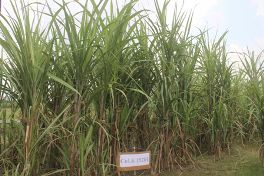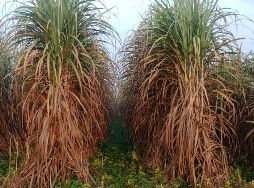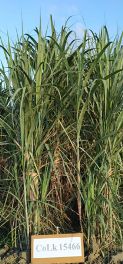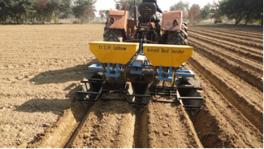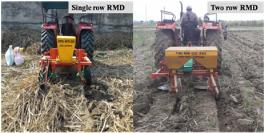Technologies developed by the Institute
Crop Improvement |
|||||||||||||||||||||||||||||||||||||||||||||||||||||||||||||||||||||||||||||||||||||||||||
|
|
||||||||||||||||||||||||||||||||||||||||||||||||||||||||||||||||||||||||||||||||||||||||||
|
|
||||||||||||||||||||||||||||||||||||||||||||||||||||||||||||||||||||||||||||||||||||||||||
|
|
||||||||||||||||||||||||||||||||||||||||||||||||||||||||||||||||||||||||||||||||||||||||||
|
|
||||||||||||||||||||||||||||||||||||||||||||||||||||||||||||||||||||||||||||||||||||||||||
|
|
||||||||||||||||||||||||||||||||||||||||||||||||||||||||||||||||||||||||||||||||||||||||||
|
|
||||||||||||||||||||||||||||||||||||||||||||||||||||||||||||||||||||||||||||||||||||||||||
|
|
||||||||||||||||||||||||||||||||||||||||||||||||||||||||||||||||||||||||||||||||||||||||||
|
|
||||||||||||||||||||||||||||||||||||||||||||||||||||||||||||||||||||||||||||||||||||||||||
|
|
||||||||||||||||||||||||||||||||||||||||||||||||||||||||||||||||||||||||||||||||||||||||||
|
|
||||||||||||||||||||||||||||||||||||||||||||||||||||||||||||||||||||||||||||||||||||||||||
|
|
||||||||||||||||||||||||||||||||||||||||||||||||||||||||||||||||||||||||||||||||||||||||||
|
|
||||||||||||||||||||||||||||||||||||||||||||||||||||||||||||||||||||||||||||||||||||||||||
|
|
||||||||||||||||||||||||||||||||||||||||||||||||||||||||||||||||||||||||||||||||||||||||||
|
|
||||||||||||||||||||||||||||||||||||||||||||||||||||||||||||||||||||||||||||||||||||||||||
Crop Protection |
|||||||||||||||||||||||||||||||||||||||||||||||||||||||||||||||||||||||||||||||||||||||||||
IISR combo insect trap for the management of white grabs and monitoring of sugarcane borers |
|||||||||||||||||||||||||||||||||||||||||||||||||||||||||||||||||||||||||||||||||||||||||||
|
Technology has been sold to a manufacturer M/S Fine Trap India Limited, Yavatmal, Maharashtra. Traps are used at large scale in Maharashtra and Andhra Pradesh |
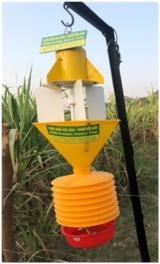 |
||||||||||||||||||||||||||||||||||||||||||||||||||||||||||||||||||||||||||||||||||||||||||
Blue bull repellent |
|||||||||||||||||||||||||||||||||||||||||||||||||||||||||||||||||||||||||||||||||||||||||||
|
Trap has major components like lamp shade, LED bulb assembly and reflector strips to mimic fire. It is effective in repelling the blue bulls from the fields during night hours. Field experiments have revealed that 2 nos. of IISR-Blue Bull Repellant per hectare are enough to ward off Blue Bulls from the fields during night hours. |
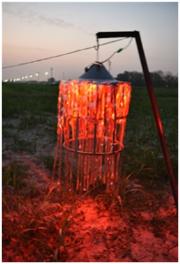 |
||||||||||||||||||||||||||||||||||||||||||||||||||||||||||||||||||||||||||||||||||||||||||
IISR Ward |
|||||||||||||||||||||||||||||||||||||||||||||||||||||||||||||||||||||||||||||||||||||||||||
|
Trap is solar and battery-operated system (charged with solar panel as well with electricity. Other major components like lamp shade, LED bulb assembly, reflector cloth strips, sound system of jacals and dogs to ward off wild animals with periodical on/off system. MOU has been signed with SKR Agrotech, Wardha Maharashtra. |
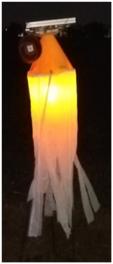 |
||||||||||||||||||||||||||||||||||||||||||||||||||||||||||||||||||||||||||||||||||||||||||
Plant Physiology and Biochemistry |
|||||||||||||||||||||||||||||||||||||||||||||||||||||||||||||||||||||||||||||||||||||||||||
Spaced Transplanting Technique (STP) |
|||||||||||||||||||||||||||||||||||||||||||||||||||||||||||||||||||||||||||||||||||||||||||
|
Occurrence of higher mortality adversely affects stalk density and crop productivity. Besides, with the advent of new improved varieties, transportation of their bulk cane seed material and slow multiplication rate (ratio being 1:8 to 1: 10) is an important constraint to seed programme. Based on physiological understanding of germination (sprouting), tillering vis-a-vis inter-and intra-plant competition, a planting procedure, Spaced Transplanting Technique (STP), has been developed which saves the precious cane seed material, ensures higher stalk population (number of millable canes) with a uniform crop stand and higher average cane weight. It has also been a boon for rapid multiplication of seed cane. |
.jpg) | ||||||||||||||||||||||||||||||||||||||||||||||||||||||||||||||||||||||||||||||||||||||||||
Bud Chip Technology |
|||||||||||||||||||||||||||||||||||||||||||||||||||||||||||||||||||||||||||||||||||||||||||
|
Bud chip technology reduces mass, quality and leads to quick multiplication of seed and optimizes initial shoot population. Scooped bud chips / single bud setts with a viable bud and root primordial is used as a planting material and raised their nursery under field conditions. The buds are scooped out with bud scooping device and soaked in specially formulated plant growth regulator (PGR) solution and essential nutrients for 2 hrs. The chips are then treated with fungicide, Bavistin (0.1%) for 20 min. The pretreated bud chips are planted in plastic cups/trays filled with soil mixture containing soil, organic matter and sand in a ratio of 1:1:1. The cups are punctured with a needle at the bottom to facilitate drainage of excess water. The technique led to uniform crop stand, synchronized tillering, higher rate of tiller formation (>2.0 lakh) and their conversion into millable canes leading to higher population of millable canes (>1.2 lakh canes/ha), with higher average cane weight and finally higher cane yield (>100t/ha). |
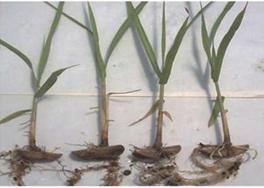
|
||||||||||||||||||||||||||||||||||||||||||||||||||||||||||||||||||||||||||||||||||||||||||
PGR technology for Increased Cane and Sugar Yield |
|||||||||||||||||||||||||||||||||||||||||||||||||||||||||||||||||||||||||||||||||||||||||||
|
Phasic Exogenous application of Ethrel and GA3 application across the crop cycle for augmenting cane and sugar yield. Plant growth hormones (usage of Ethrel and GA3) have potentially improved the sett vigour, enhanced its ability to sprout and established uniform and robust settlings in spring planted crop. Their usage led to significant alteration in leaf orientation, cane length and root architecture. Architectural alterations caused faster heterotrophic to autotrophic transitions at planting stage (February). This induced high initial plant population (45 DAP), which was followed by induction of smart canopy with increased source activity, above and below ground sink development at 60 DAP. The formation of smart canopy was due to development of erectophiles against planophiles (leaf angle 45-) in control. Changes in leaf angle enabled added advantage of enhanced CO2 utilization and radiation use efficiency. The GA3 induced leaf orientation formed a smart canopy and improved dry matter partitioning. Further, leaf erectness also reduced the shading effects amongst the leaf present on a stalk, rendering increase in radiation use by lower leaf laminae of the stalk. GA3 induced branched roots with steep angles (30-), threefold increase in root weights and root hair development, sustained the nutrient requirement of increased shoot population. The application led to significant increase in cane yield of 255 tha-1 (per cane weight 847 g). The large accommodation of stalks in limited ground area with Ethrel and GA3 is due to the development of smart canopies supported by a robust root system, where each plant occupied merely 331 cm2 ground area against 800 cm2 in control. The architectural alterations through PGR in sugarcane crop increased cane yield from 70-85 tha-1 to 255 tha-1 in spring planted sugarcane crop. |
 |
||||||||||||||||||||||||||||||||||||||||||||||||||||||||||||||||||||||||||||||||||||||||||
Technology for Minimising Post-harvest sucrose losses |
|||||||||||||||||||||||||||||||||||||||||||||||||||||||||||||||||||||||||||||||||||||||||||
|
Chemical formulation consisting of benzalkonium chloride and sodium metasilicate followed by covering with trash found effective in minimizing post-harvest sucrose losses in sugarcane Y Post-harvest application of sodium meta silicate (0.5 %) + benzalkonium chloride (0.2%). |
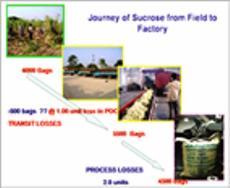 |
||||||||||||||||||||||||||||||||||||||||||||||||||||||||||||||||||||||||||||||||||||||||||
Agricultural Engineering |
|||||||||||||||||||||||||||||||||||||||||||||||||||||||||||||||||||||||||||||||||||||||||||
Deep furrow sugarcane cutter planter |
|||||||||||||||||||||||||||||||||||||||||||||||||||||||||||||||||||||||||||||||||||||||||||
|
Sugarcane planting comprised of number of unit operations such as cutting of whole seed cane into setts as seed material, deep furrow opening, placing seed-setts in furrows, mixing of fertilizer, application of insecticide over setts and coverage of setts by soil and its light compaction. These operations are arduous, energy and labour intensive and involve human drudgery. There is a need for mechanizing planting operation to save time, labour and cost and also to avoid human drudgery. Moreover, furrow method of sugarcane planting has shown promise in saving of irrigation water due to furrow irrigation, reduced cane lodging and better ratooning due to deep rooting. In view of the above, tractor operated deep furrow sugarcane cutter planter was developed to mechanize sugarcane planting in deep furrows. It performs all the unit operations involved in sugarcane planting including sett cutting simultaneously in single pass and having provision for adjustment of row spacing of 75/90 cm or 100/120/150 cm. It is equipped with deep furrow opener, sharp edged blades to cut whole cane into 350 mm long pieces as seed material, metering device for application of fertilizer and insecticide, soil covering shovels and tamping roller for pressing soil cover. In addition to the above, the equipment was also provided with two seats for persons feeding the seed-canes. All the moving parts were guarded to avoid any accident. |
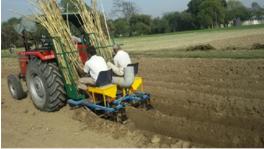 |
||||||||||||||||||||||||||||||||||||||||||||||||||||||||||||||||||||||||||||||||||||||||||
|
|||||||||||||||||||||||||||||||||||||||||||||||||||||||||||||||||||||||||||||||||||||||||||
Sugarcane trench planter |
|||||||||||||||||||||||||||||||||||||||||||||||||||||||||||||||||||||||||||||||||||||||||||
|
The trench planting of sugarcane is considered as a superior planting technique as compared to conventional flat method in terms of irrigation water saving, reduced cane lodging, better ratooning and increase in cane yield. Sugarcane trench planter performs all the unit operations of sugarcane planting in trench paired furrows simultaneously in single pass. It is equipped with trench opener, sharp edged blades to cut whole cane into 350 mm long pieces as seed material, metering device for application of fertilizer and insecticide, soil covering shovels and tamping roller for pressing soil cover. The furrow opening unit is equipped with two mould board ploughs (width of cut of share is 10 cm) spaced at 30 cm and curvature of mould board is specially designed and extended to prevent fall back of cut loose soil in the furrows. |
 |
||||||||||||||||||||||||||||||||||||||||||||||||||||||||||||||||||||||||||||||||||||||||||
| Specifications | |||||||||||||||||||||||||||||||||||||||||||||||||||||||||||||||||||||||||||||||||||||||||||
| Power source | >26 kW Tractor | ||||||||||||||||||||||||||||||||||||||||||||||||||||||||||||||||||||||||||||||||||||||||||
| Number of rows | Single trench consisting of a paired row | ||||||||||||||||||||||||||||||||||||||||||||||||||||||||||||||||||||||||||||||||||||||||||
| Type of furrow opener | Deep and wide trench consisting of paired rows | ||||||||||||||||||||||||||||||||||||||||||||||||||||||||||||||||||||||||||||||||||||||||||
| Spacing between paired row, cm | 30 | ||||||||||||||||||||||||||||||||||||||||||||||||||||||||||||||||||||||||||||||||||||||||||
| Spacing between trenches, cm | 120 | ||||||||||||||||||||||||||||||||||||||||||||||||||||||||||||||||||||||||||||||||||||||||||
| Cost of the machine, Rs | 1,00,000 | ||||||||||||||||||||||||||||||||||||||||||||||||||||||||||||||||||||||||||||||||||||||||||
| Cost of planting operation, Rs/ha | 3000 | ||||||||||||||||||||||||||||||||||||||||||||||||||||||||||||||||||||||||||||||||||||||||||
| Performance results | |||||||||||||||||||||||||||||||||||||||||||||||||||||||||||||||||||||||||||||||||||||||||||
| Effective field capacity, ha/h | 0.20 | ||||||||||||||||||||||||||||||||||||||||||||||||||||||||||||||||||||||||||||||||||||||||||
| Field efficiency, % | 60 | ||||||||||||||||||||||||||||||||||||||||||||||||||||||||||||||||||||||||||||||||||||||||||
| Saving in cost of operation over conventional, % | 60 | ||||||||||||||||||||||||||||||||||||||||||||||||||||||||||||||||||||||||||||||||||||||||||
| Saving in labour requirement, % | >90 (35 man-d) | ||||||||||||||||||||||||||||||||||||||||||||||||||||||||||||||||||||||||||||||||||||||||||
| Benefits over conventional/traditional practices | |||||||||||||||||||||||||||||||||||||||||||||||||||||||||||||||||||||||||||||||||||||||||||
|
This machine facilitates mechanization of trench method of planting and performs all the unit operations involved in sugarcane planting including sett cutting simultaneously in single pass. Sub-surface drip laterals laying attachment has also been provided. |
|||||||||||||||||||||||||||||||||||||||||||||||||||||||||||||||||||||||||||||||||||||||||||
| Status of commercialization | |||||||||||||||||||||||||||||||||||||||||||||||||||||||||||||||||||||||||||||||||||||||||||
| Commercialized and applicable to sugarcane growing area of the country especially sub-tropical part. | |||||||||||||||||||||||||||||||||||||||||||||||||||||||||||||||||||||||||||||||||||||||||||
| Source of availability | |||||||||||||||||||||||||||||||||||||||||||||||||||||||||||||||||||||||||||||||||||||||||||
| Agricultural machinery manufacturers having MoA with IISR | |||||||||||||||||||||||||||||||||||||||||||||||||||||||||||||||||||||||||||||||||||||||||||
Two row pit digger |
|||||||||||||||||||||||||||||||||||||||||||||||||||||||||||||||||||||||||||||||||||||||||||
|
Ring pit method of sugarcane planting has shown promise in significantly increasing the productivity of sugarcane. However, digging of large number of circular pits in the entire field was found to be very cumbersome, labour intensive and costly affair. Therefore, the technique could not be popularized for large scale planting. For mechanizing pit digging operations a tractor operated pit digger was developed. It was a double bottom, mounted type, equipment. The developed pit digger consisted of main frame, pit digging blades and power transmission units. Power to the pit digging blades is derived through tractor PTO with the help of telescopic propeller shaft, a main gear unit and V-bet pulleys. During pit digging operation auger blades cut the soil and flutes carry the cut soil out off pit for getting clean pit. |
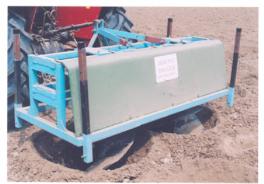 |
||||||||||||||||||||||||||||||||||||||||||||||||||||||||||||||||||||||||||||||||||||||||||
| Specifications | |||||||||||||||||||||||||||||||||||||||||||||||||||||||||||||||||||||||||||||||||||||||||||
| Power source | >26 kW Tractor | ||||||||||||||||||||||||||||||||||||||||||||||||||||||||||||||||||||||||||||||||||||||||||
| Number of digging blades | 2 | ||||||||||||||||||||||||||||||||||||||||||||||||||||||||||||||||||||||||||||||||||||||||||
| Type of digging blades | Auger type | ||||||||||||||||||||||||||||||||||||||||||||||||||||||||||||||||||||||||||||||||||||||||||
| Cost of the machine, Rs | 80,000 | ||||||||||||||||||||||||||||||||||||||||||||||||||||||||||||||||||||||||||||||||||||||||||
| Cost of planting operation, Rs/ha | 13600 | ||||||||||||||||||||||||||||||||||||||||||||||||||||||||||||||||||||||||||||||||||||||||||
| Performance results | |||||||||||||||||||||||||||||||||||||||||||||||||||||||||||||||||||||||||||||||||||||||||||
| Effective field capacity, ha/h | 0.017 | ||||||||||||||||||||||||||||||||||||||||||||||||||||||||||||||||||||||||||||||||||||||||||
| Field efficiency, % | 60 | ||||||||||||||||||||||||||||||||||||||||||||||||||||||||||||||||||||||||||||||||||||||||||
| Saving in cost of operation over conventional, % | 70 | ||||||||||||||||||||||||||||||||||||||||||||||||||||||||||||||||||||||||||||||||||||||||||
| Saving in labour requirement, % | >90 | ||||||||||||||||||||||||||||||||||||||||||||||||||||||||||||||||||||||||||||||||||||||||||
| Benefits over conventional/traditional practices | |||||||||||||||||||||||||||||||||||||||||||||||||||||||||||||||||||||||||||||||||||||||||||
| It mechanizes pit digging operations for planting of sugarcane under ring-pit method. Pit digging is performed manually under conventional method. | |||||||||||||||||||||||||||||||||||||||||||||||||||||||||||||||||||||||||||||||||||||||||||
| Status of commercialization | |||||||||||||||||||||||||||||||||||||||||||||||||||||||||||||||||||||||||||||||||||||||||||
| Commercialized and applicable to sugarcane growing area of the country especially sub-tropical part. | |||||||||||||||||||||||||||||||||||||||||||||||||||||||||||||||||||||||||||||||||||||||||||
| Source of availability | |||||||||||||||||||||||||||||||||||||||||||||||||||||||||||||||||||||||||||||||||||||||||||
| Agricultural machinery manufacturers having MoA with IISR | |||||||||||||||||||||||||||||||||||||||||||||||||||||||||||||||||||||||||||||||||||||||||||
Deep furrower raised bed seeder-cum-fertilizer applicator |
|||||||||||||||||||||||||||||||||||||||||||||||||||||||||||||||||||||||||||||||||||||||||||
| Raising short duration rabi crop like wheat, lentil etc. in furrow irrigated raised bed system (FIRBs) with sugarcane has been found very remunerative to the farmers apart from saving of irrigation water. Problem with the adoption of this system is availability of a machine to mechanize the operation of making raised beds and sowing of seeds on the raised beds. In order to fulfill the machinery gap a tractor operated deep furrower raised bed seeder-cum-fertilizer applicator was developed. It performs opening of three furrows and making of two raised beds and sowing of three rows of seeds of companion crop like wheat, pulses etc. on each raised bed simultaneously in a single pass. Cane is planted manually in the furrows. This machine mechanizes relay intercropping of wheat/pulses with sugarcane. |
| ||||||||||||||||||||||||||||||||||||||||||||||||||||||||||||||||||||||||||||||||||||||||||
| Specifications | |||||||||||||||||||||||||||||||||||||||||||||||||||||||||||||||||||||||||||||||||||||||||||
| Power source | >26 kW Tractor | ||||||||||||||||||||||||||||||||||||||||||||||||||||||||||||||||||||||||||||||||||||||||||
| Cost of the machine, Rs | 40,000 | ||||||||||||||||||||||||||||||||||||||||||||||||||||||||||||||||||||||||||||||||||||||||||
| Cost of operation Rs/ha | 1800 | ||||||||||||||||||||||||||||||||||||||||||||||||||||||||||||||||||||||||||||||||||||||||||
| Performance results | |||||||||||||||||||||||||||||||||||||||||||||||||||||||||||||||||||||||||||||||||||||||||||
| Width of coverage, m | 1.6 | ||||||||||||||||||||||||||||||||||||||||||||||||||||||||||||||||||||||||||||||||||||||||||
| Effective field capacity, ha/h | 0.40 | ||||||||||||||||||||||||||||||||||||||||||||||||||||||||||||||||||||||||||||||||||||||||||
| Field efficiency, % | 75 | ||||||||||||||||||||||||||||||||||||||||||||||||||||||||||||||||||||||||||||||||||||||||||
| Saving in cost of operation over conventional, % | >50 | ||||||||||||||||||||||||||||||||||||||||||||||||||||||||||||||||||||||||||||||||||||||||||
| Saving in labour requirement, % | 70 | ||||||||||||||||||||||||||||||||||||||||||||||||||||||||||||||||||||||||||||||||||||||||||
| Benefits over conventional/traditional practices | |||||||||||||||||||||||||||||||||||||||||||||||||||||||||||||||||||||||||||||||||||||||||||
| This machine performs opening of three furrows and making of two raised beds and sowing of three rows of seeds of companion crop (wheat, pulses etc.) in a single pass. | |||||||||||||||||||||||||||||||||||||||||||||||||||||||||||||||||||||||||||||||||||||||||||
| Status of commercialization | |||||||||||||||||||||||||||||||||||||||||||||||||||||||||||||||||||||||||||||||||||||||||||
| Commercialized and is applicable to sugarcane growing area of the country especially sub-tropical part. | |||||||||||||||||||||||||||||||||||||||||||||||||||||||||||||||||||||||||||||||||||||||||||
| Source of availability | |||||||||||||||||||||||||||||||||||||||||||||||||||||||||||||||||||||||||||||||||||||||||||
| Agricultural machinery manufacturers having MoA with IISR | |||||||||||||||||||||||||||||||||||||||||||||||||||||||||||||||||||||||||||||||||||||||||||
Sugarcane cutter planter cum raised bed seeder | |||||||||||||||||||||||||||||||||||||||||||||||||||||||||||||||||||||||||||||||||||||||||||
|
Sugarcane cutter planter-cum-raised bed seeder is a multitasking machine which performs sowing of wheat/pulses on raised beds along with simultaneous planting of sugarcane in deep furrows. It consisted of a frame, two deep furrowers and raised bed maker, power transmission unit, whole cane seed trays for each row, sett-cutting unit, fertilizer metering unit, chemical/insecticide application unit, soil covering and tamping unit and seeder for sowing of intercrop on raised beds. It opens two deep furrows and two raised beds (1 full + two half). Machine plants sugarcane in deep furrows and sow two rows of intercrops on raised beds simultaneously in a single pass. |
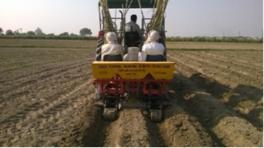 |
||||||||||||||||||||||||||||||||||||||||||||||||||||||||||||||||||||||||||||||||||||||||||
| Specifications | |||||||||||||||||||||||||||||||||||||||||||||||||||||||||||||||||||||||||||||||||||||||||||
| Power source | >26 kW Tractor | ||||||||||||||||||||||||||||||||||||||||||||||||||||||||||||||||||||||||||||||||||||||||||
| Cost of the machine, Rs | 1,50,000 | ||||||||||||||||||||||||||||||||||||||||||||||||||||||||||||||||||||||||||||||||||||||||||
| Cost of operation Rs/ha | 3300 | ||||||||||||||||||||||||||||||||||||||||||||||||||||||||||||||||||||||||||||||||||||||||||
| Performance results | |||||||||||||||||||||||||||||||||||||||||||||||||||||||||||||||||||||||||||||||||||||||||||
| Width of coverage, m | 1.5 | ||||||||||||||||||||||||||||||||||||||||||||||||||||||||||||||||||||||||||||||||||||||||||
| Effective field capacity, ha/h | 0.18 | ||||||||||||||||||||||||||||||||||||||||||||||||||||||||||||||||||||||||||||||||||||||||||
| Field efficiency, % | 57 | ||||||||||||||||||||||||||||||||||||||||||||||||||||||||||||||||||||||||||||||||||||||||||
| Saving in cost of operation over conventional, % | 60 | ||||||||||||||||||||||||||||||||||||||||||||||||||||||||||||||||||||||||||||||||||||||||||
| Saving in labour requirement, % | 90 | ||||||||||||||||||||||||||||||||||||||||||||||||||||||||||||||||||||||||||||||||||||||||||
| Benefits over conventional/traditional practices | |||||||||||||||||||||||||||||||||||||||||||||||||||||||||||||||||||||||||||||||||||||||||||
| Sowing of wheat/pulses on raised beds along with simultaneous planting of sugarcane in furrows. | |||||||||||||||||||||||||||||||||||||||||||||||||||||||||||||||||||||||||||||||||||||||||||
| Status of commercialization | |||||||||||||||||||||||||||||||||||||||||||||||||||||||||||||||||||||||||||||||||||||||||||
| Commercialized and applicable to sugarcane growing area of the country especially sub-tropical part. | |||||||||||||||||||||||||||||||||||||||||||||||||||||||||||||||||||||||||||||||||||||||||||
| Source of availability | |||||||||||||||||||||||||||||||||||||||||||||||||||||||||||||||||||||||||||||||||||||||||||
| Agricultural machinery manufacturers having MoA with IISR | |||||||||||||||||||||||||||||||||||||||||||||||||||||||||||||||||||||||||||||||||||||||||||
Sugarcane cum potato planter |
|||||||||||||||||||||||||||||||||||||||||||||||||||||||||||||||||||||||||||||||||||||||||||
|
Growing potato as intercrop with sugarcane has a synergistic effect on sugarcane, resulting in increased economic returns to farmers. Sugarcane plant canopy does not close in during first 3-4 months after planting. During this period, the inter row space remains unoccupied and the young sugarcane plants do not require much light, water and land. Hence, there is a great scope to grow short duration crop in the available unoccupied space between sugarcane rows. Developed sugarcane-cum-potato planter is equipped with deep furrowers for opening of furrow and ridge making in between furrows, sett cutting unit for cane planting, potato seed tuber metering mechanism for potato planting, covering unit for covering planted sugarcane setts and potato and insecticide application unit. The designed equipment planted two rows of sugarcane in deep furrows and two rows of potato on ridges simultaneously in single pass. Picking and dropping of seed potato was automatic whereas, sugarcane seed feeding for sett cutting was manual. |
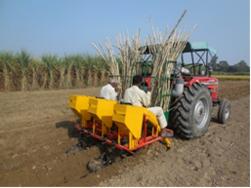 |
||||||||||||||||||||||||||||||||||||||||||||||||||||||||||||||||||||||||||||||||||||||||||
| |||||||||||||||||||||||||||||||||||||||||||||||||||||||||||||||||||||||||||||||||||||||||||


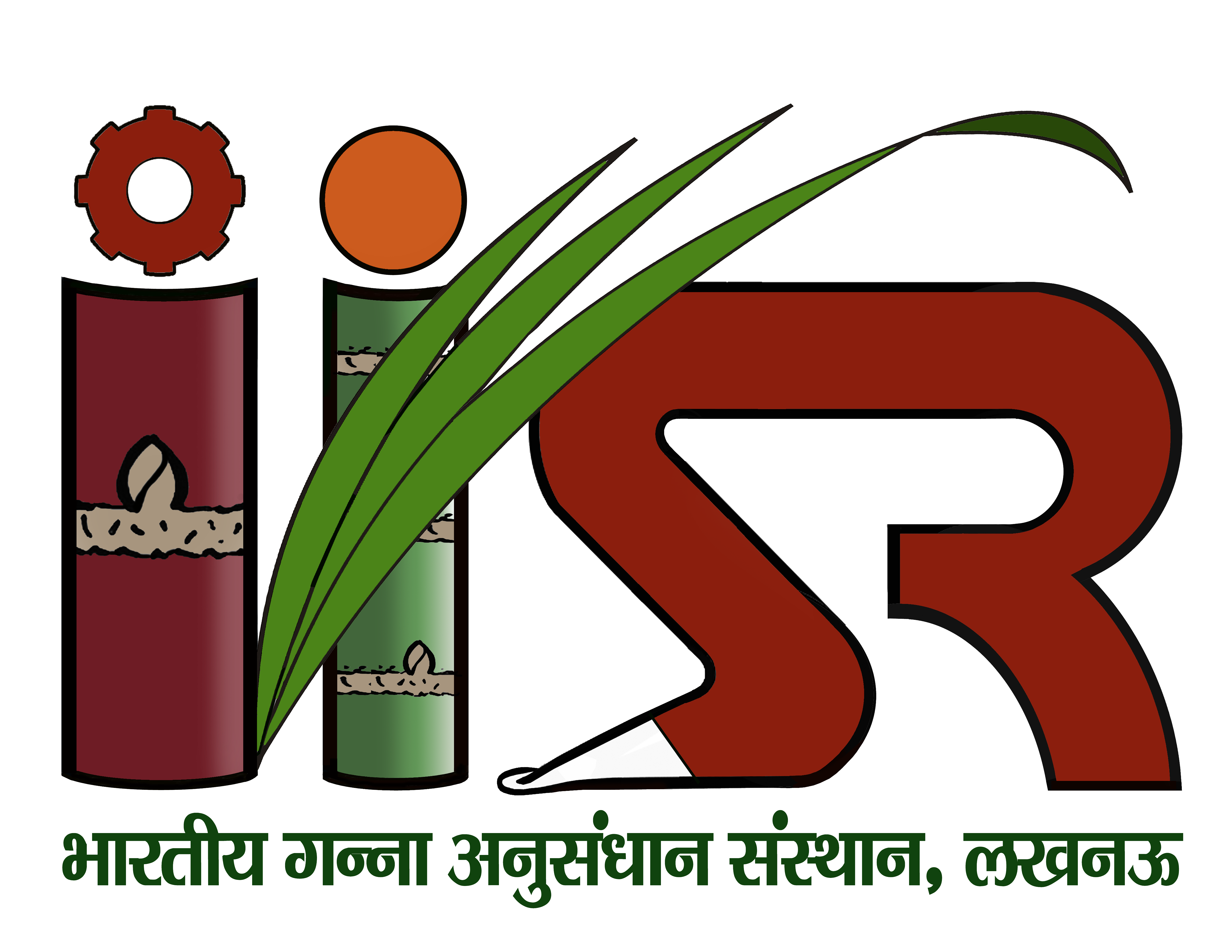
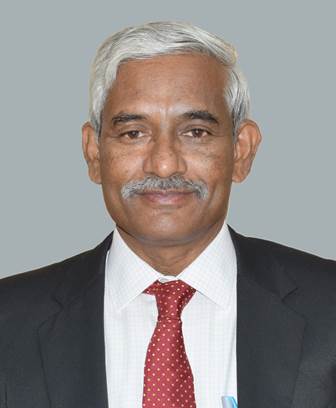
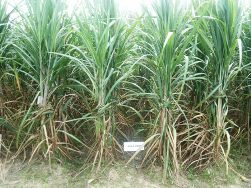

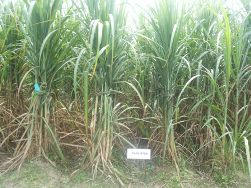
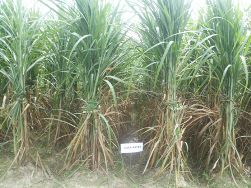

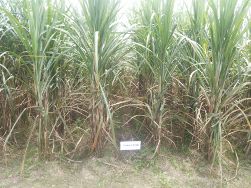
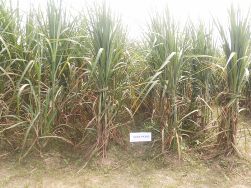
.jpg)
.jpg)
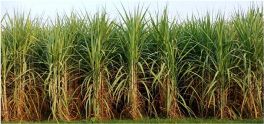
.jpg)
